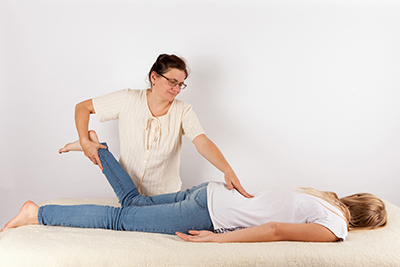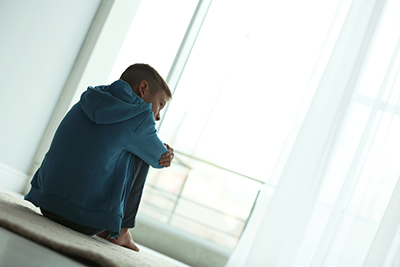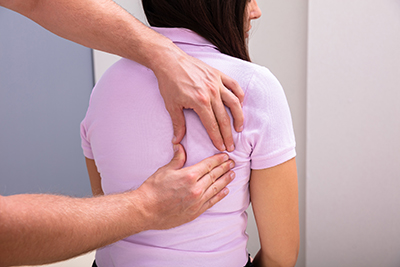“Hands-On” Approach for Adolescent Stress Management
Stressed-Out Youth
Over the past several years, I am seeing an ever-increasing number of children and adolescents with symptoms of stress and attention disorders. And in these difficult times, these children feel more vulnerable and ill-equipped to deal with uncertainty. They experience sadness and fear; they have difficulty coping with loneliness; and new situations increase their stress levels. Boys often behave aggressively, and many of them develop physical symptoms: stomach aches, headaches, nausea, sleeping troubles, etc. In short, they don’t have the ability to adapt or concentrate, and failure at school is often what awaits them.
There are ways of intervening to reassure, supervise, and set clear limits.
Your kids need guidance. The emotional bond is important, and the boundaries must be clear. Apart from their school obligations, their screen time must be limited, as they are very stimulating for young people. Be mindful of sugar and dyes in snacks, as they can worsen symptoms. A balanced breakfast, with good fats and a source of protein, will allow better concentration at school. Feel free to seek advice on preventive health with a qualified naturopath or nutritionist.
 You need to examine your own quality of life and presence in order to offer them a stable environment.
You need to examine your own quality of life and presence in order to offer them a stable environment.
Often, one of the parents will also confide about living with chronic stress symptoms. The apple rarely falls far from the tree! What can reassure your child? To know that there is a captain in the boat! Yes, it is you who must set clear limits and stop inappropriate actions. A child with a present parent, who establishes clear rules and who is also capable of listening and providing guidance, feels reassured, accompanied, and safe.
Are You Spending Quality Time with Your Family?
Laugh, play, cook, or just be together. Give yourself the luxury of idle time outside of duties, activities, obligations, work stress, and worries of all kinds. Your child needs you to feel good. Focus on quality over quantity, and your child will perform better. His nervous system will calm down at the same time as yours!
 An Addition to My Practice
An Addition to My Practice
In 40 years of practice as a psychoeducator, the best training I could add to my practice was the Bowen technique, originally developed in Australia. Thanks to the addition of this technique to my practice, the young people I had been following over long periods could now benefit from a noticeable improvement in their stress symptoms, in just a few meetings.
The Bowen Technique: A Manual Therapy for You and Your Child
The Bowen technique is a very gentle body approach. The therapist applies slight movements to the body in order to promote a state of relaxation conducive to wellness and homeostasis (the control process by which the body maintains different parameters of the internal environment).
The Bowen Physical Approach to Help Calm the Nervous System
These soft and gentle movements influence the body’s nervous system by promoting its parasympathetic function, which results in a state of calm and relaxation, rather than the sympathetic activity necessary in case of “fight-or-flight” danger that can often be chronically excited by the various stresses we face. By contributing to a state of relaxation via the nervous system, the Bowen technique helps to improve the functioning of the endocrine and immune systems, which are closely linked to the nervous system.
Bowen Treatment Promotes Relaxation and the Body’s Natural Restoration
With the Bowen approach, not only do the soothing effects induced in the nervous system help calm your mind, but they also help, by domino effect, to relax muscles and tendons. Pain and tension, e.g, in the neck and shoulders, can decrease in intensity. When the body gradually finds a more balanced state, it effectively reacts to the movements of Bowen therapy, promoting natural repair and regulation processes.
For example, a clinical study of 20 patients suffering from “frozen shoulder” syndrome evaluated the effects of the Bowen technique on three criteria: pain, motor function, as well as general wellbeing.[1] The results were encouraging, as all participants observed a significant improvement in pain as well as better mobility in their everyday activities.
Bowen Treatment Can Improve Your Digestive Health
Our gastrointestinal system is among the most innervated organs of the body, and it is thus particularly sensitive to stress and anxiety that disrupt the nervous system and the enteric system, thereby inducing various disorders commonly observed in anxious people such as digestive disorders, diarrhea, weight problems, and hormonal imbalances.
Bowen Treatment Can Help Relieve Headaches and Migraines
Headaches and migraines can have various causes such as digestive problems, hormonal imbalances, traumas, etc., but also stress. Following the Bowen technique can reduce the effects of stress on the body, headache and migraine symptoms can be significantly reduced.
Practical Case: A Child Regains Wellbeing and Vitality
Here is the story of an 11-year-old, whom I received as part of my practice: he endured significant insecurity at school. He hardly ever left home, only going to school, where his concentration problems made him experience an intense fear of failure. There he was agitated, anxious, and stressed, and he was aware that he was disturbing others, since he was constantly moving and making noise in the classroom. Over the years, the situation had become complicated for his parents who, despite seeing several experts, did not see satisfactory results.
From my first meeting with this boy, I used the Bowen technique’s basic movements to simply help his body and his nervous system to rebalance. The week after that first intervention, he was already sleeping better, and he was calmer (which was rare before) and able to concentrate better. He himself was surprised by this appeasement, and his parents were very emotional on seeing their beloved son’s symptoms start to fade!
 Over the next two meetings, he had a lot to tell me. He had noted the times when his fears surfaced and very precisely described his physical symptoms to me. When working manually using the Bowen technique, I paid special attention to his head, where he had received a trauma in his early age, and to his diaphragm to help him relax and to soothe the contained emotions and stress. The results were spectacular. After only three meetings, he told me that he had “set the record straight in his head,” and I can say that I had a new child in front of me. What I find spectacular is how quickly he recovered. First, because he had the will, but also because his body was ready to release the tension of this “state of emergency” that had settled in and no longer had its raison d’être.
Over the next two meetings, he had a lot to tell me. He had noted the times when his fears surfaced and very precisely described his physical symptoms to me. When working manually using the Bowen technique, I paid special attention to his head, where he had received a trauma in his early age, and to his diaphragm to help him relax and to soothe the contained emotions and stress. The results were spectacular. After only three meetings, he told me that he had “set the record straight in his head,” and I can say that I had a new child in front of me. What I find spectacular is how quickly he recovered. First, because he had the will, but also because his body was ready to release the tension of this “state of emergency” that had settled in and no longer had its raison d’être.
 Conclusion
Conclusion
For most people, stress symptoms usually go away once the conflict is resolved. However, if these symptoms do not go away and they persist for one reason or another, it could make your daily life extremely difficult.
In this case, do not hesitate to try manual therapies such as the Bowen technique; it is safe and part of a holistic approach to mental health. This technique allows me to perform in-depth and more satisfying work in the short term. Obviously, recovery time varies from one person to another, but I am constantly amazed at how quickly the physical, emotional, and mental symptoms, both in children and adults, can fade. There is nothing more satisfying than to witness the return to vitality of a teen, adult, or even senior person. And when I talk about vitality, I am talking about the life that is inside each of us and that keeps us healthy… globally.
 Jocelyne Harvey, BSc in Psychoeducation, BTAA
Jocelyne Harvey, BSc in Psychoeducation, BTAA
A graduate in psychoeducation from the University of Montreal, in comprehensive approach to counseling, and in Bowen Therapy of Australia, Jocelyne has been spending 40 years to the development of children, adolescents, and adults.
scenergie.net
[1] Carter, B. “A pilot study to evaluate the effectiveness of Bowen technique in the management of clients with frozen shoulder.” Complementary Therapies in Medicine, Vol. 9, No. 4 (2001): 208–215.

 Stores
Stores